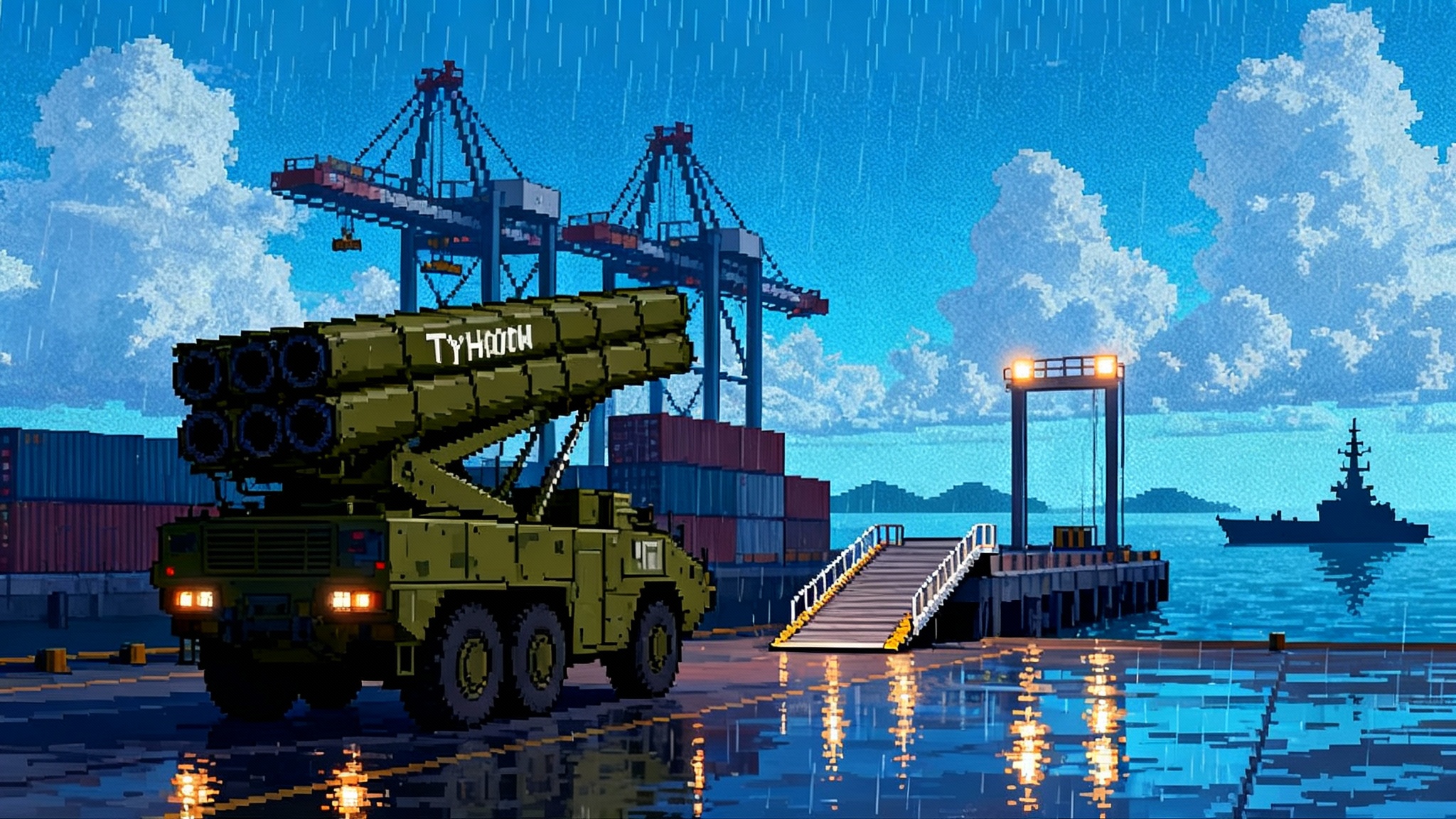SDA’s Tranche 1 lifts off as the LEO battle network arrives
Before dawn on September 10, 2025, SDA’s first Tranche 1 mission put a laser‑linked mesh of small satellites into low Earth orbit. Here is how this Transport Layer cuts minutes from the kill chain, why optical crosslinks and on‑orbit autonomy matter, and what Tranche 2 brings next.

The quiet birth of a battle network
Before sunrise over California on September 10, 2025, a Falcon 9 climbed away from Vandenberg Space Force Base carrying 21 small data transport satellites built by York Space Systems. With that ascent, the Space Development Agency’s first operational Tranche 1 mission moved from schedule to space. The payload is not glamorous. It is a set of routers in orbit, stitched together by lasers, meant to get information to shooters fast in the worst conditions. That is the point. Hollywood loves a single exquisite satellite. This architecture bets on many simple ones. The agency calls it the Proliferated Warfighter Space Architecture. The Transport Layer is the switchboard.
The agency confirmed the milestone in an official update on the first Tranche 1 launch. The near term plan is steady: launches roughly monthly as additional spacecraft from Lockheed Martin and Northrop Grumman join York’s birds, building to more than a hundred Transport Layer nodes. When the dust settles, Tranche 1 totals 154 satellites, including 126 transport craft and 28 tracking spacecraft, with a handful of missile defense demonstrations. The goal by 2027 is regional persistence for tactical data links, missile warning and tracking, and beyond line of sight targeting.
That may sound like bureaucracy. It is actually a concrete change in how a joint force finds and finishes targets.
What the Transport Layer really is
Think of the Transport Layer as a constellation of moving cell towers and fiber backhaul combined into one, but the towers are in low Earth orbit and the backhaul is a grid of optical crosslinks. Each satellite talks to several neighbors via laser and to users by radio. The magic is not any single node. It is the mesh. If one satellite is jammed or shot, dozens of other paths route around the damage.
On board you will find optical terminals for satellite to satellite links, radio payloads like Ka band for high throughput downlink, and L band for tactical data links such as Link 16. The constellation is deliberately heterogeneous. Different vendors, similar functions, common standards. Interoperability is the forcing function. This mirrors NATO’s push toward NATO plug-and-fight interoperability. In a crisis you do not want to ask which contractor built the relay between a missile warning sensor and a destroyer.
Why a proliferated LEO mesh compresses timelines
Speed is not just about faster radios. It is about geometry. A satellite in low Earth orbit circles the planet in about ninety minutes. A handful are always above the horizon for any unit. Multiple paths mean a message can hop across space via laser faster than it could fight through an overused satellite radio channel or a congested terrestrial network.
Consider a simple chain. A radar on the ground detects a cruise missile. It pushes a terse track to the nearest Transport Layer satellite. Lasers relay to another satellite over the maritime area, which injects that track into a ship’s combat system. The ship either fires or cues a fighter. When it replies, the message returns along a different set of satellites that happened to be in geometry at that moment. None of those links asked permission from a single master ground station. The network finds a way because there are many ways.
Latency also benefits from physics. Laser links are point to point, with narrow beams and no need to share spectrum with everything else in theater. They are hard to detect and harder to jam. In practice, the effect is like moving from a single interstate to a spiderweb of express lanes that do not intersect, and those lanes can reconfigure every few seconds as the satellites move.
Link 16 from space is the bridge to the force you have
Proliferated LEO would be far less useful if it could not talk to the radios already bolted to jets, ships, and air defenses. That is where Link 16 matters. The Space Development Agency has already demonstrated space to ground Link 16 network entry using Tranche 0 satellites. In plain terms, a low Earth orbit satellite acted like another participant in the familiar tactical data network used by fighters, Aegis ships, and air defenses. That makes the Transport Layer valuable on day one because it extends a known network beyond the horizon.
A destroyer or fighter does not need a brand new terminal to see a track relayed through space. It just needs Link 16 line of sight to a satellite that is overhead at that minute. That relay can move a text-like cue, an identification status, or a weapon assignment. This is how you cut minutes from the kill chain without waiting for every platform to upgrade.
Optical crosslinks are the center of gravity
If the Transport Layer is a nervous system, the optical terminals are its synapses. They are the part worth doubling down on.
- Optical links raise the ceiling on throughput and lower detectability. A narrow laser beam does not spill energy across a wide area. That reduces the chance of interception and jamming while boosting data rates.
- Optical links create path diversity. Each satellite can maintain multiple simultaneous crosslinks. If an adversary blinds one path or a node fails, the network routes around the problem instantly.
- Optical links reduce spectrum burden. Every megahertz not used in space is a megahertz available to warfighters on the ground.
There is a catch. Optical terminals must point with precision to tiny fast moving targets and hold lock through vibration, thermal swings, and orbital dynamics. The prize goes to the team that can manufacture thousands of such terminals, cheap and reliable, with common interfaces. That is why standardization is not a paperwork exercise. It is a force multiplier.
The case for acceleration is simple. Every spacecraft that leaves the factory with more optical ports and interoperable firmware makes the whole network more capable the moment it is launched. Satellite buses are getting commoditized. Optical crosslink behavior, from acquisition timing to routing prioritization, is where advantage will accumulate.
On-orbit autonomy is the other accelerator
A proliferated mesh asks for control decisions every second. Which crosslinks to open. Which path to use. How to balance time sensitive tracks versus bulk data. Relying on operators to make these choices over a contested theater would recreate the bottlenecks that the architecture is meant to avoid.
The remedy is on-orbit autonomy that is practical, auditable, and incremental. Practical means algorithms that run on flight processors that already fly, not hypothetical supercomputers. Auditable means operators can see why a route was chosen and intervene when rules demand it. Incremental means deploy autonomy in narrow lanes first: crosslink management, queueing, and path selection, before escalating to tasking sensors. That aligns with DoD efforts around Replicator and AI-enabled mass.
A workable playbook looks like this:
- Put the traffic cop in space. Move link scheduling and path computation onto the satellites with rule sets that can be updated over the air. Start with deterministic behaviors like prioritizing fire control quality tracks.
- Use shadow mode. Let autonomy make recommendations while the ground still has veto, then promote functions to execute mode as confidence grows.
- Containerize flight apps. Package routing and queueing software so it can be swapped mid-life, with golden rollback images and strict resource guards.
- Telemetry for decisions. Log every path choice and timing window so that test ranges and operational units can evaluate performance after real missions.
The return is fewer seconds lost to command loops and fewer single points of failure on the ground.
What Tranche 1 delivers between now and 2027
Tranche 1 is not a science project. It is the first operational delivery of the mesh, and it is built to be useful as it grows.
- The first 21 Transport Layer satellites on orbit begin the relay network. As additional launches add York, Lockheed Martin, and Northrop Grumman spacecraft, coverage becomes continuous over priority regions.
- Initial capabilities include space based relay of Link 16 and Ka band tactical links, beyond line of sight targeting, and missile warning and tracking when paired with the Tracking Layer. In 2027, the agency aims to provide regional persistence for these services, not just snapshots.
- Launch cadence matters. A roughly monthly rhythm for the next several months means each increment of spacecraft quickly improves the network. Warfighters do not wait two years for a step change. They get a little more each month.
This is spiral development in practice. The force begins to train on the real network now. Tactics evolve with the hardware, not after it.
What Tranche 2 adds next
If Tranche 1 is the local network, Tranche 2 is the global backbone. The Transport Layer grows into the hundreds of spacecraft. The Tracking Layer adds new sensors designed to generate fire control quality data. That phrase matters. It does not just mean a good track. It means a track precise and reliable enough to feed a weapon without additional long dwell times. The agency’s plan for the Tracking Layer explicitly calls out the fire control-quality sensors plan, with launches targeted for the 2026 to 2027 window.
The Transport Layer in Tranche 2 is built from several variants known as Beta, Alpha, and Gamma, with multiple primes from Northrop Grumman, Lockheed Martin, York Space Systems, Rocket Lab’s national security team, and Tyvak. The reason for variants is practical. Different orbits, different payload mixes, and different security postures can be tuned without breaking the common fabric of the mesh.
For operators, the headline is the emergence of direct to shooter links at scale. That means the Transport Layer can connect a sensor’s validated track to a weapon platform’s fire control loop without a long relay through a human on a radio. Humans still make the decision. The network removes mechanical delay.
What this means for the Services
- Air: Fighters get far edge cues beyond line of sight without talking to a gateway aircraft. That frees tankers and battle managers to stay outside threat rings. Loyal wingman and medium UAVs can pass targeting data through space rather than hunting for a friendly relay. See also our coverage of NATO plug-and-fight interoperability for how standards accelerate this.
- Sea: Aegis ships receive cross theater missile tracks propagated by lasers rather than flooded radio channels. Amphibious groups can keep silent in emissions while still receiving targeting updates injected from above.
- Land: Air defense batteries tied into Link 16 or successor tactical links can receive and contribute to a common picture even when ground relays are jammed or cut. Army long range fires get a clean path to battle damage assessment imagery without depending on leased commercial bandwidth in a region, as programs like land-based Tomahawk and SM-6 reshape theater fires.
- Allies: If you carry Link 16 or future allied tactical links and receive the right cryptographic keys, you are already part of the plan. The mesh grows coalition effects because it builds on radios that partners already own.
What industry should do now
- Build optical terminals like a product line, not a boutique. Standard mechanical and software interfaces. Documented acquisition and tracking performance. Known heat budgets. Known pointing gimbals. Delivery in thousands, not dozens.
- Prove cross vendor interoperability on orbit. Take terminals from two suppliers and show stable, high rate links in the real thermal and vibrational conditions of space, not just in an air-conditioned lab.
- Offer autonomy modules as flight apps. Route selection, queue management, and link scheduling as replaceable software with measurable performance guarantees.
- Harden manufacturing against supply shocks. The mesh is only resilient if production is resilient. Second source optics, alternate suppliers for detectors and drivers, and radiation tolerant components should be designed in early.
- Bring test ranges into the loop. Provide operator-in-the-loop simulations that use real satellite schedules so squadrons and ships can rehearse with the actual cadence and coverage they will see.
The risks we must manage
- Debris and conjunctions. Hundreds of satellites raise traffic management demand. The mitigation is baked in: more nodes give more routing options, and autonomous collision avoidance with clear rules of the road should be a program baseline.
- Electromagnetic rules. Link 16 in space touches sensitive regulatory ground. The way forward is tightly bounded test corridors, strict geographic activation, and close coordination with allies to prevent harmful interference.
- Anti-satellite threats. Proliferation, optical links, and autonomy are the counters. There is no single satellite to kill for a decisive effect. Routing adapts in seconds to lost nodes. Narrow laser beams deny easy jamming and make interception harder.
- Power and thermal margins. Optical terminals and radios compete for energy and cooling. Design choices that prioritize extra optical ports and radiator area now pay off later as traffic grows.
A grounded, slightly accelerationist playbook
Here is how to outpace adversaries without betting the farm:
- Double the optical. Increase the average number of crosslink ports per spacecraft for the remaining Tranche 1 builds and carry that baseline into Tranche 2. More ports equal more paths and faster recovery from losses.
- Standardize the handshake. Lock in cross vendor optical link standards and test them in mixed formations before launch. Reward primes that demonstrate real interop on orbit with schedule incentives.
- Push autonomy to the edge. Make crosslink setup, path selection, and queueing onboard functions first, with audit trails and rule uploads. Keep humans in the loop for sensor tasking and target engagement.
- Bake in direct to shooter. For Tranche 2, certify specific pathways from validated tracks to fire control interfaces on ships, aircraft, and ground launchers. Exercise them in live fire events.
- Train on the real constellation. As each launch adds coverage, schedule joint exercises that use the network as it is, not an idealized simulation. Adjust tactics monthly.
The bottom line
A warfighting network in space is not a future promise anymore. It is taking shape in plain view, with small satellites turning on in clusters and finding each other by laser. Tranche 1 will not change the character of war by itself. It will shorten the loop between seeing and acting. Tranche 2 will shorten it again and lift more of that loop into space.
The advantage will go to the side that treats optical crosslinks and on-orbit autonomy as the core competitive levers, not extras. That begins with this first operational launch and accelerates with every new plane delivered. The constellation is arriving in pieces. The right move now is to build the mesh that can think and heal at the speed of the fight. When it is needed, it will already be there, quietly linking sensors to shooters across a sky full of invisible beams.








